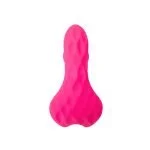The rare 12th century walrus ivory carving depicting Joseph of Arimathea taking the body of Christ down from the cross that was acquired by the Metropolitan Museum of Art in a private sale last year has been sniped by the V&A.
The Romanesque carving was made between 1190 and 1200 probably in York. It was originally part of a much larger altarpiece of scenes from the Passion of the Christ. The carved details — the drapery, poses, the facial expressions — are masterful examples of skill in ivory carving. The English Reformation slashed and burned much of this kind of devotional art. Today the Deposition is widely considered one of the greatest surviving pieces of medieval British carved ivory.
Because of its great rarity, the exceptional quality of the carving and its cultural significance, the UK Arts Minister placed a temporary export bar on the Deposition to allow a local museum the opportunity to match the purchase price and keep the artwork in Britain. There was no question as to which local museum would throw its hat in the ring. The Deposition and a fragment depicting Judas at the Last Supper from the same lost altarpiece were on display together at the V&A from 1982 until 2022. The Judas fragment was donated to the museum in 1949; the Deposition was on long-term loan from collectors John and Gertrude Hunt, and only left the museum when their heirs decided to sell it.
 The Deposition was exhibited once at The Metropolitan Museum of Art in 1970, and the Met was eager to make it part of its permanent collection when it was offered for sale. Sotheby’s negotiated the private sale, but it was clear from the beginning that the sale was contingent on an export license that was very likely to be barred. The Met set a high bar for any British museum to clear, paying £2 million ($2.5 million) for the seven-inch figure.
The Deposition was exhibited once at The Metropolitan Museum of Art in 1970, and the Met was eager to make it part of its permanent collection when it was offered for sale. Sotheby’s negotiated the private sale, but it was clear from the beginning that the sale was contingent on an export license that was very likely to be barred. The Met set a high bar for any British museum to clear, paying £2 million ($2.5 million) for the seven-inch figure.
As soon as the temporary export ban was in place, the V&A launched a fundraising campaign to raise the large sum. Two grants (£700,000 from the National Heritage Memorial Fund and £350,000 from the Art Fund) got them more than halfway to the goal. Other non-profits, the museum’s own budget and donors near and far got the V&A to its goal.
Light conservation is now being conducted on the Deposition and it will go on display in September. It will be shown alongside the Judas fragment, in the V&A’s Medieval and Renaissance galleries.


 Anal Beads
Anal Beads Anal Vibrators
Anal Vibrators Butt Plugs
Butt Plugs Prostate Massagers
Prostate Massagers
 Alien Dildos
Alien Dildos Realistic Dildos
Realistic Dildos
 Kegel Exercisers & Balls
Kegel Exercisers & Balls Classic Vibrating Eggs
Classic Vibrating Eggs Remote Vibrating Eggs
Remote Vibrating Eggs Vibrating Bullets
Vibrating Bullets
 Bullet Vibrators
Bullet Vibrators Classic Vibrators
Classic Vibrators Clitoral Vibrators
Clitoral Vibrators G-Spot Vibrators
G-Spot Vibrators Massage Wand Vibrators
Massage Wand Vibrators Rabbit Vibrators
Rabbit Vibrators Remote Vibrators
Remote Vibrators
 Pocket Stroker & Pussy Masturbators
Pocket Stroker & Pussy Masturbators Vibrating Masturbators
Vibrating Masturbators
 Cock Rings
Cock Rings Penis Pumps
Penis Pumps
 Wearable Vibrators
Wearable Vibrators Blindfolds, Masks & Gags
Blindfolds, Masks & Gags Bondage Kits
Bondage Kits Bondage Wear & Fetish Clothing
Bondage Wear & Fetish Clothing Restraints & Handcuffs
Restraints & Handcuffs Sex Swings
Sex Swings Ticklers, Paddles & Whips
Ticklers, Paddles & Whips



















